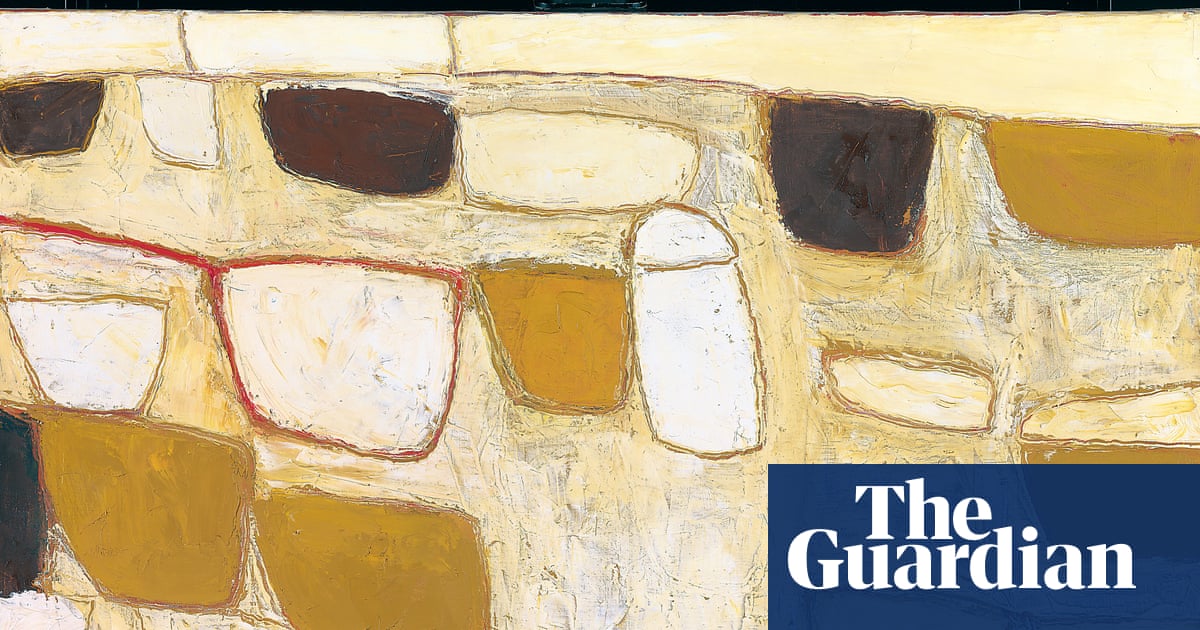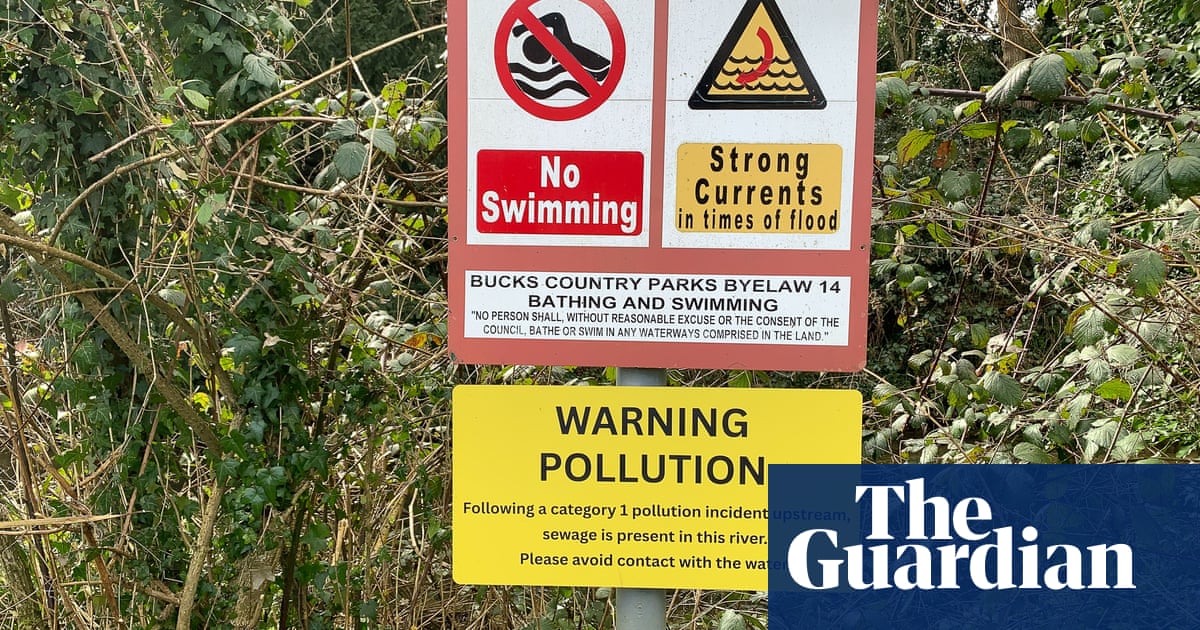Shortly after dawn, Lumphini Park comes alive. Bangkok residents descend on the sprawling green oasis in the middle of the city, eager to squeeze in a workout before the heat of the day takes hold. Joggers trot along curving paths. Old men struggle under barbells at the outdoor gym. Spandex-clad women stretch into yoga poses on the grass.
Just metres away, one of the park’s more infamous occupants strikes its own lizard pose. About 400 Asian water monitor lizards call Lumphini Park home, and this morning they are out in full force – scrambling up palm trees, swimming through the waterways and wrestling on the road.
Every now and then, a scaly interloper veers in front of a runner, oblivious to the morning stampede. “The big ones are usually fine because they move quite slowly and you can kind of hop over,” says Jayla Chintanaroj, a Bangkok resident who often runs in the park. “But the small ones can be quite fast. There have been a few times I’ve almost tripped over one.”
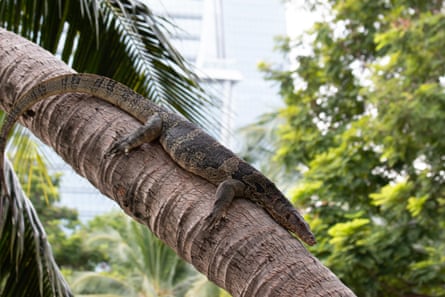
The Asian water monitor (Varanus salvator) is the world’s second-largest species of lizard, reaching lengths of about two metres (7ft). It can be found in rivers, lakes and swamps across south-east Asia and into India and China. Increasingly, however, the dark brown lizard can be spotted in urban areas, joining an exclusive league of animals that have carved out a stronghold in cities.
As the urban lizard population explodes, authorities are receiving more calls about conflicts: lizards intruding upon popular fishing spots, raiding livestock, and even crawling into people’s homes.
Yet, at the same time, the water monitor lizard – once derided in Thai culture – has never been so popular, buoyed up by social media. JX Ang lives close to the park, and says he has become a fan of his scaly neighbours. “It’s actually really nice to see them when you’re going about your day and then suddenly you see a nice little Godzilla swimming through the water,” he says. Ang fondly recalls a time he witnessed more than 10 lizards leisurely soaking in a park fountain on a hot day.
“It was like a massive lizard onsen Jacuzzi. It was awesome.”
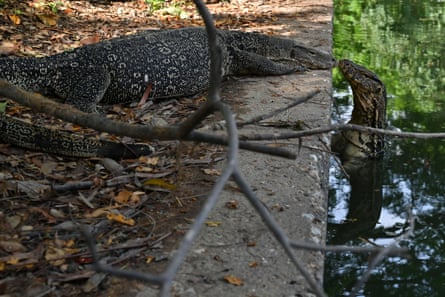
For environmental authorities, the lizard boom represents a new challenge: to carefully manage the population without disrupting one of Bangkok’s growing ecological attractions.
No one knows exactly how many lizards are prowling through Bangkok and its tapestry of more than 1,600 canals, known as khlongs, where the lizard thrives. The city, local people boast, has more canals than Venice.
The khlongs provide the perfect cover for water monitors, which feed on a near-constant buffet of fish, birds, chickens and organic waste, helping to dispose of animal carcasses and control rat populations.
“In urban areas, they have no natural enemies, which gives them a high survival rate,” says Thosapol Suparee, a deputy director-general of the Bangkok metropolitan administration’s environmental department.
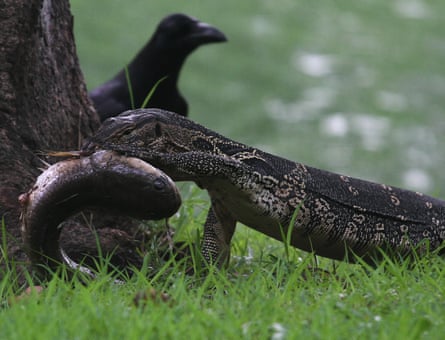
Unlike the larger Komodo dragon, which has a venomous bite capable of taking down a water buffalo, the Asian water monitor is considered mostly harmless to humans – making it easier to ignore.
One 2024 study tried to assess the urban takeover of monitor lizards across south-east Asia, but struggled to do so. “Despite being … the largest lizard with established populations in urban areas, [Varanus salvator] has drawn relatively little attention from ecologists regarding its colonisation of numerous major cities across Asia,” the authors wrote.
“Sometimes these ecological or zoological phenomena are very obvious in urban areas, yet they still don’t get enough research,” says study co-author Álvaro Luna, of the European University of Madrid.
Lumphini Park is one place where lizard numbers are closely tracked, as large reptiles running amok in the park can cause problems including “fear and disturbance during rest or exercise”, Suparee says. “On roads, water monitors may also pose risks for accidents.”
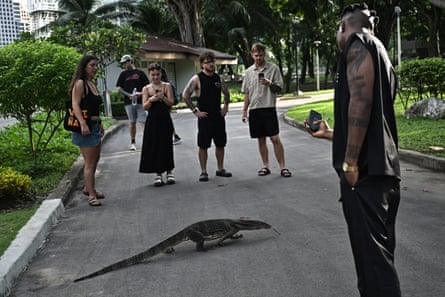
The surveys show the park lizard population is rapidly increasing. Ideally, Suparee says, the population should stay below 400. In the past, rising numbers of lizards spurred authorities to intervene, with wildlife officials capturing and relocating dozens from Lumphini in 2016. But a female lizard lays a clutch of about 20 eggs at a time, and numbers swiftly bounced back.
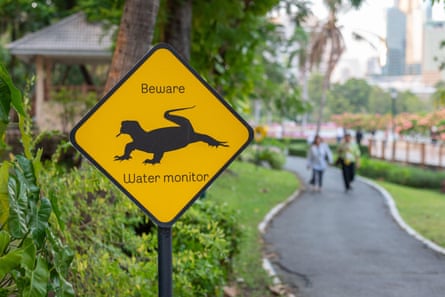
That may not be the worst thing. While the monitor lizard has long been held in contempt in Thai culture (the Thai word for monitor lizard – hia – is considered a highly offensive swear word), public opinion has begun to shift.
Many people trace the turning point to a 2021 viral video that captured a 6ft-long lizard climbing a convenience store’s shelf – a quintessential snapshot of modern Thai life. People began to rally around the creatures, and they are increasingly seen as a draw for tourists.
“I’ve seen on TikTok and Instagram, people are like: ‘When you’re in Thailand, you have to come to Lumphini Park to see these monsters!’” Chintanaroj says.
City officials have also embraced the lizard’s rising stardom. Earlier this year, a large statue of a monitor lizard was installed near one of Lumphini’s artificial lakes. “It was erected to show that water monitors are not just park animals, but also represent the richness of Bangkok’s ecosystem,” Suparee says.
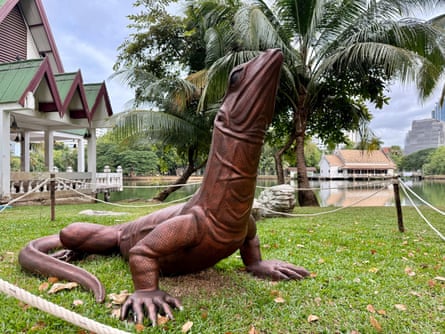
National authorities see opportunities to exploit the lizard beyond tourism. Although water monitors are protected in Thailand, in July the government moved to begin permitting restricted breeding for commercial purposes – such as leather goods – citing their growing numbers.
Somying Thunhikorn, a forestry technical officer with the department of parks and wildlife, says: “We think this decision will benefit the private sector and communities with conflicts, as well as reduce illegal hunting and the impact to water monitors in the wild.”
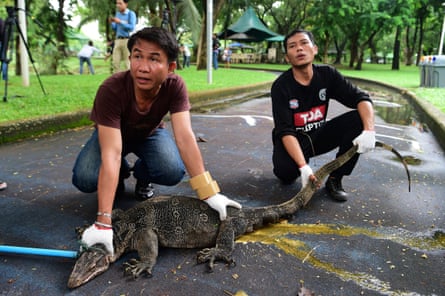
The initial stock must come from one of the department’s breeding stations, home to “nuisance” lizards, in Ratchaburi province. All lizards must be microchipped to prove they have not been illegally taken from the wild.
So far, commercial farming permits have been issued for about 200 of the lizards, Thunhikorn says.
Ang says he is not sure how to feel about Thailand’s move to begin farming the charismatic reptiles. After all, he says with a laugh: “They’re the original Moo Deng.”
Find more age of extinction coverage here, and follow the biodiversity reporters Phoebe Weston and Patrick Greenfield in the Guardian app for more nature coverage

.png) 1 month ago
42
1 month ago
42













